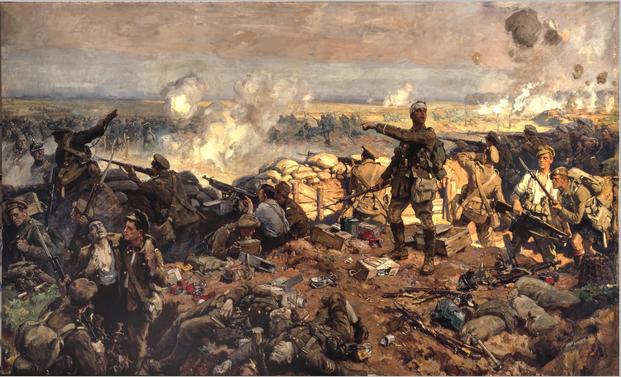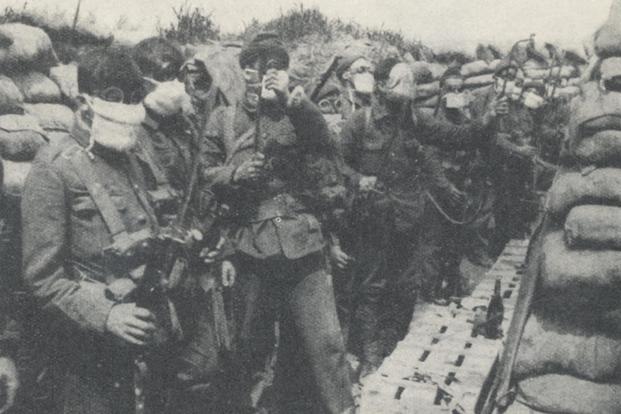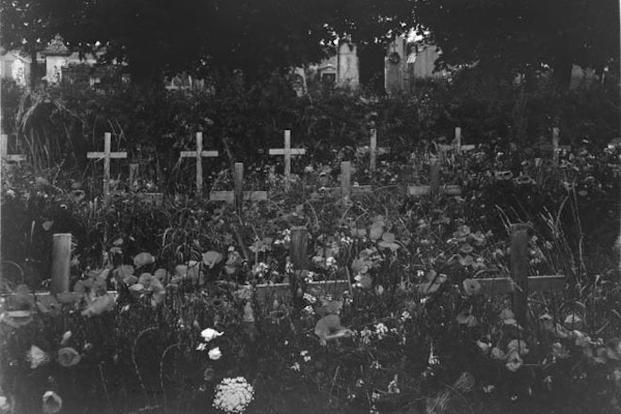On Nov. 11, Americans celebrate veterans and honor those who served, but the date holds special meaning beyond our borders and around the world. In fact, the 11th of November is a solemn day to many of our nation's allies.
To them, it is Remembrance Day or Armistice Day, commemorating the end of World War I hostilities at the 11th hour, of the 11th day, of the 11th month in 1918. The red poppy became synonymous with the fallen troops during the First World War -- and has remained a symbol of their sacrifice ever since. But the poppies adopted this meaning because of the war poem "In Flanders Fields," written by the Canadian physician, Lt. Col. John McCrae.
It was at the second battle of Ypres, Belgium, in April to May 1915 where McCrae saw the devastation firsthand. The Germans had just begun using chlorine gas against their enemies. Within the first 10 minutes of the battle, there were already 6,000 French casualties. After only the first 17 days, half of McCrae's brigade had died in battle.
McCrae's close friend, Alexis Helmer, was killed in action on May 2. He performed the burial service himself. As he laid his friend to rest, he saw beauty in the hellscape around him.
Red poppies are a hardy flower. Where the land had been destroyed by mortar fire, chlorine gas and countless other environmental concerns, the poppies grew around the graves; not even the high sodium or increased levels of lime could deter the red blooms.
Nearly every grave was decorated, as if it were a symbol from above.
The next day, in the back of an ambulance overlooking the battlefield, McCrae wrote what arguably became Canada's most well-known literary work.

“In Flanders fields the poppies grow
Between the crosses, row on row,
That mark our place; and in the sky
The larks, still bravely singing, fly
Scarce heard amid the guns below.

We are the Dead. Short days ago
We lived, felt dawn, saw sunset glow,
Loved and were loved, and now we lie
In Flanders fields.

Take up our quarrel with the foe:
To you from failing hands we throw
The torch; be yours to hold it high.
If ye break faith with us who die
We shall not sleep, though poppies grow
In Flanders fields.”
– "In Flanders Field" by John McCrae
McCrae was promoted to the consulting physician of the First British Army just four days before dying of pneumonia on Jan. 28, 1918. He would never know the end of the war or see the true impact of his poem. Canadians, Brits, Aussies and New Zealanders wear a red poppy to remember the fallen of all wars. Americans borrow from this tradition for Memorial Day.
Memorial Day in America falls on the last Monday of May -- and it’s no coincidence that it occurs during the time of year when flowers, including the red poppy, are most in bloom.
More articles from We Are the Mighty:
- World War II secret code breaker finds life’s purpose in a drawer
- These are the worst military decisions of each US President in one sentence
- 5 times soldiers won against the odds
We Are The Mighty (WATM) celebrates service with stories that inspire. WATM is made in Hollywood by veterans. It's military life presented like never before. Check it out at We Are the Mighty.
Keep Up With the Best in Military Entertainment
Whether you're looking for news and entertainment, thinking of joining the military or keeping up with military life and benefits, Military.com has you covered. Subscribe to the Military.com newsletter to have military news, updates and resources delivered straight to your inbox.














